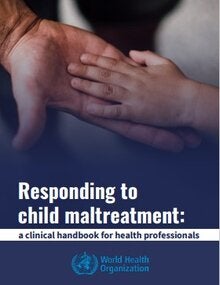Overview
Child maltreatment is widespread, but often hidden. Only a fraction of child victims of maltreatment ever tell anyone about what happened to them and very few of these children receive the support they need. While in a unique position to help child victims of maltreatment whom they encounter in their day-to-day practice, health professionals are not always equipped to do so. When they are, they can play an important role in mitigating the negative consequences of abuse and neglect and preventing further harm. Responding to child maltreatment: a clinical handbook for health professionals assists doctors, nurses and other health professionals to identify child maltreatment in their day-to-day practice, communicate safely with children and caregivers about abuse, and learn the necessary skills to respond appropriately to child maltreatment in all its forms.
|

